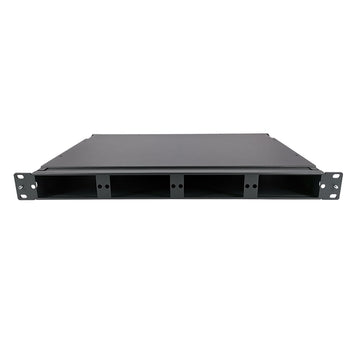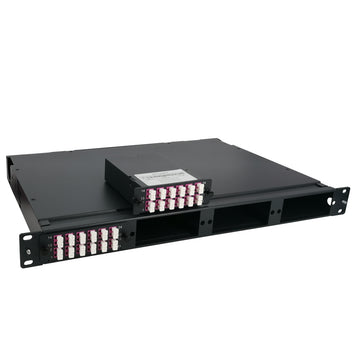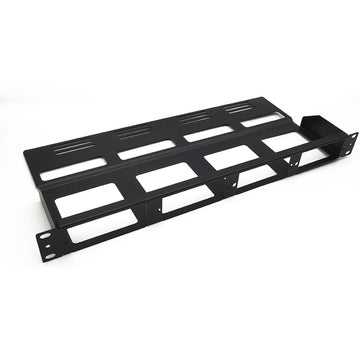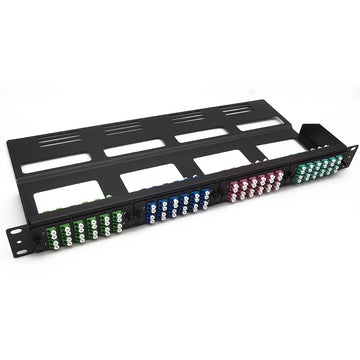DSL vs Fiber vs Cable Internet: How to choose?
DSL vs Fiber vs Cable Internet: How to choose?
Nowadays, the Internet plays an important role in personal and business usage. Internet providers continue to enhance their infrastructures, providing different internet services. Before deploying the internet, you need to determine what kind of internet connection suits your needs. In this post, our focus will be on fiber vs. Etherner cable vs. DSL, the three types of physical wires for internet connections.
What Is DSL Cable?
DSL is short for Digital Subscriber Line. It is one of the oldest Internet technologies which is used by homes or businesses to send and receive data via copper telephone lines.
It seems much like dial-up because they both use your phone line to transfer data and connect you to the internet. However, DSL cable is a step above dial-up internet: It enables you to make a phone call and go on the internet at the same time while you can only do one at a time when using dial-up connections. There are two types of DSL cable: Symmetric Digital Subscriber Line (SDSL) and Asymmetric Digital Subscriber Line (ADSL). SDSL offers equal upload and download speeds while ADSL offers download speeds higher than upload speeds.
What Is Fiber Optic Cable?
The fiber optic cable contains strands of glass fibers inside an insulated casing. Compared with the wired cables, fiber optic cable speed is faster which is designed for long distance and high performance data networking. Single mode fiber and multimode fiber are the primary types of fiber optic cable. Both of them can support the world’s Internet, cable television and telephone system.
What Is Ethernet Cable?
Ethernet cables are the most common network cable type in our daily life. It connects network devices such as PCs, routers, and switches within a local area network.
The commonly used Ethernet cord types are Cat5, Cat5e, Cat6, Cat7 and the new category Cat8. Each new promotion of category supports increasingly faster bandwidth speeds and improves upon the signal-to-noise ratio.
Among these network cables, Cat6 cables remain popular in home use, and Cat7 and Cat8 cables are aimed at business users who need higher speeds and higher bandwidth.
Fiber vs. Ethernet Cable vs. DSL Cable: What's the difference?
- Structure
To some extent, DSL cables have a similar structure as Ethernet cables: both of them are constructed of copper cables to transfer data using electrical impulse. The difference is that DSL uses the standard phone plug while typical Ethernet cables have two extra pairs of twisted copper wires with a larger plug as shown in the figure below. As for the fiber optic cable, the structure is evidently distinct. Optical cable consists of fiber core wire, outer jacket and strengthening members, and it delivers data using fiber instead.
- Speed
Out of the three different connection types, fiber is easily the fastest and most stable. Fiber connections generally have speeds of at least 100 Mbps, and can go all the way up to 2 Gbps for regular consumers.
Technically, the theoretical bandwidth limit of a fiber optic cable is absurdly high. Given the right (incredibly expensive) equipment, fiber optic internet can reach transfer speeds of above one Petabit (1,000 Terabits or 1,000,000 Gigabits) per second. That said, it’s rare to find anything for public use exceeding 2 Gbps, though some ISPs go as high as 10 Gbps.
Cable comes in at second place. Although you can find cable connections as fast as 500 Mbps (and the theoretical limit is as high as 10 Gbps), most will fall in the 20 to 100 Mbps range.
Finally, there’s DSL, which will rarely exceed 30 Mbps at best. The theoretical max speed varies depending on the type of DSL, but even the fastest (VDSL) caps out at around 60 Mbps.
Summing things up, a good rule of thumb is that fiber internet is generally 10 times as fast as cable, which itself is usually at least twice as fast as DSL.
- Availability
Given the clear superiority of fiber, you might think that cable and DSL would be obsolete. Unfortunately, on a global scale, fiber-optic internet is still only available in very limited areas. Even when you just look at OECD countries (essentially the wealthiest nations in the world), fiber only overtook DSL in terms of availability in 2020, and still trails behind cable.
Because of this, the reality is that many — if not most — consumers won’t have the option to choose between different types of broadband, if they even have a choice of competing ISPs at all. That said, at least in OECD countries, fiber is the fastest growing type of broadband, with 21.15 million new fiber subscriptions set up in 2020.
- Security
DSL provides customers with a dedicated line, therefore it is less likely to cause Internet security issues. The information passes between the central office and the customers’ home without passing through connection to other customers’ modem.
Ethernet cables using electrical signals are vulnerable to electromagnetic interference and easy to get intercepted by hackers at the hardware level.
The light transmission in fiber optic cables is not susceptible to EMI and RFI as the copper connections do and any physical break in the system is easy to identify, thus there is no way for hackers to listen in on the transmission. Overall, fiber optic cables are the most secure ones with high security and low privacy risk.
- Cost
The cost of DSL, Ethernet or fiber cable varies depending on your specific need, location, provider, terms of the agreement, and other elements. When you are about to install one of them for internet access, you should take the cable cost into account and the installation and activation fees.
Typically, the fiber optic internet cost is the most expensive one because the fiber installation is more complicated than coax with many variables to be considered and you need to pay for the devices matched with fiber optic cables, professional installers, etc. Since the Ethernet cable infrastructure is more expensive than the telephone, ethernet cable installation costs more compared with DSL.
DSL vs. Cable vs. Fiber: Comparison
DSL vs. Cable
DSL uses telephone lines and is the slowest option, whereas cable transmits data over copper TV lines, works faster, and carries more bandwidth. DSL is widely available because almost every part of the country has access to phone service, so it’s a great option for people in rural areas who don’t want to choose satellite internet. Cable is ideal if you stream on multiple devices, hop on a lot of video calls, or download large files, while DSL is better if you only check your email every once in a while and casually surf the internet.
Cable vs. Fiber
Fiber internet provides a high-bandwidth connection and speeds up to 1 Gbps. Cable speeds can be as fast as fiber, but they slow down during peak use times when all your neighbors get home from work and watch Netflix or a big game. That said, cable covers about 88 percent of the U.S. at an average speed of 10 to 500 Mbps. Fiber is great for competitive online gamers or someone who wants the fastest speed available and lives in larger cities where it’s available.
DSL vs. Fiber
DSL and fiber are complete opposites when it comes to speeds and coverage. Fiber is new, so it has less coverage than DSL, but fiber expansion projects are underway. DSL usually runs over pre-existing lines, making setup easy. On the other hand, fiber requires professional installation services to run the fiber-optic cables to your house.
Fiber vs. Ethernet vs. DSL Cable: Comparison of Pros and Cons
| Fiber Optic Cable | Ethernet Cable | DSL Cable | |
| Pros | gigabit speed | higher speed | economical |
| large communication capacity | widely available | widely available | |
| Cons | higher price | higher cost | slower speed |
| limited availability | speed can be affected | unstable connection |
Frequently Asked Questions About DSL, Cable, and Fiber Internet Options
Is DSL more reliable than fiber optic and cable?
DSL is one of the first Internet technologies. DSL uses your local phone line to connect to the Internet and transfer data. It is similar to dial-up Internet except it uses different frequencies for your phone Internet, so using both devices at the same time won't slow your connection. Between DSL, cable, and fiber optic, DSL is the slowest. If you choose DSL, your download speeds would be around 1 to 7 megabits per second. While this might be considered slow to some, this speed is a good amount for basic usage such as surfing the Internet, email, or standard music and video streaming. DSL would be too slow for high-definition videos, especially if you have multiple devices connected to your WiFi. Some Internet service providers do offer DSL packages with speeds up to 20 Mbps, which is slightly faster, but still is only best suited for fundamental Internet use. The main advantages of DSL are that it’s widely available and is the most affordable option when compared to cable and fiber optic. However, the disadvantage of DSL is that it’s the slowest of the bunch.
Is Cable Internet better than DSL?
As the name suggests, cable Internet is a service that uses cable wires to provide a high-speed Internet connection. Cable wires deliver a faster connection than DSL. Typically, the download speed of cable Internet ranges from 100-to 300 megabits per second. At these speeds, even households with multiple devices connected to the Wifi will be able to perform to the best of their capabilities. The only disadvantages of cable Internet are the higher costs and more limited availability.
Is Fiber Internet better than DSL and Cable?
The fastest and most advanced option available is fiber optic Internet, though it’s worth noting that advances in cable Internet are quickly catching up. Download speeds of fiber optic Internet match those of cable Internet, but fiber optic is exponentially faster than both cable and DSL Internet when it comes to upload speeds. Upload speeds are important because they affect the quality of any video chats as well as your ability to send large files. Fiber optic Internet is a great option for those who work from home. Unfortunately, Fiber optic Internet isn't as widely available as DSL or cable internet service. That's because it doesn't use pre-existing cables or phone lines. To use fiber optic Internet, new cables must be installed to provide service in an area. These special cables are unique to fiber optic Internet by using light and tiny glass fibers to send and receive data.
Conclusion
Overall, DSL cable is suitable for rural customers, and the ethernet cable is ideal for people who don’t have access to fiber or they have no requirements for lightning-fast speeds. As for Fiber optic cables, though they have not been so available as the scale of DSL and Ethernet cables, the big advantages of fast speed and high security, which is also the tendency of the network, can not be denied, so they are best for individuals or businesses that need the fastest internet connections and highest security. And we can expect that fiber optic cables will develop to a point that they will become the mainstream of internet connections.












